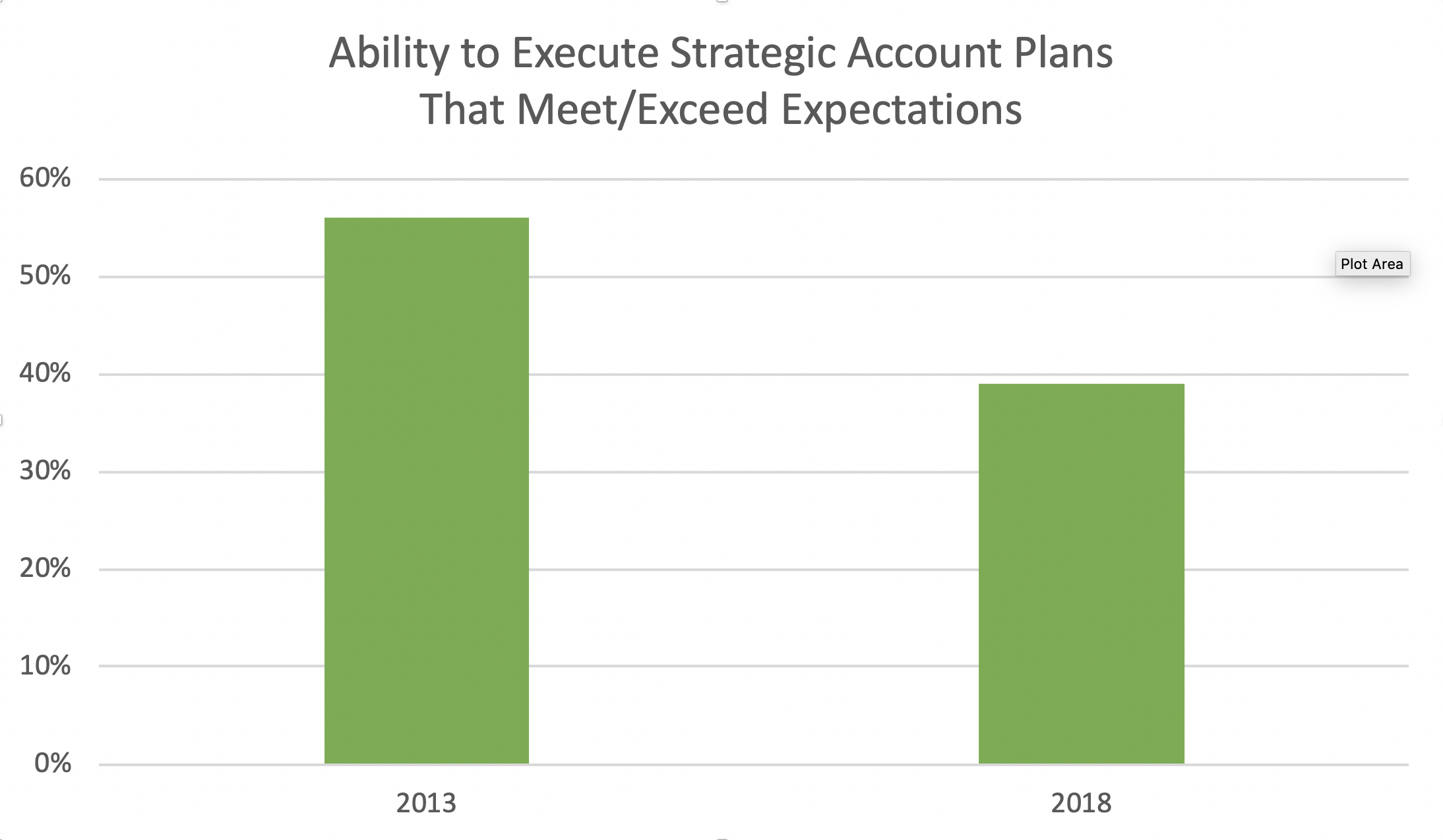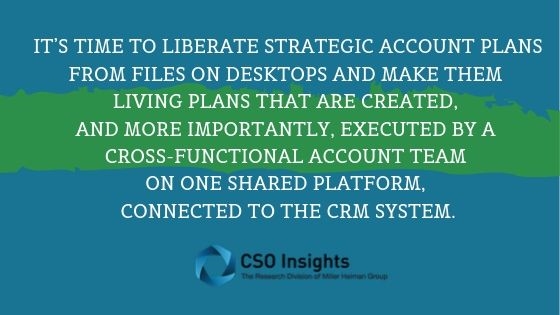We all know that all clients are not created equal. Your approach to managing and growing your most strategic accounts impacts your ability to optimize revenue.
Why Focus on Key Accounts?
Key Accounts are your most profitable, scalable, and tenured clients. For many companies, they are typically large, complex global entities with multiple buying units, functions and verticals. Key accounts are hard to win, hard to retain and particularly challenging to grow.
These customers represent significant revenue in terms of current business. They also present significant opportunities to optimize revenue by expanding into other buying centers, lines of business, or geographic regions.
Unfortunately, CSO Insights notes that 56.5% of sales organizations don’t take advantage of account planning to grow their strategic accounts.

CSO Insights/MHI 2018 Sales Effectiveness Study
For companies that prioritize the 20% of their business driving most of their revenue, business is more sustainable and more profitable. Why isn’t everyone successful when it comes to key account management?
The 5 Challenges of Growing Key Accounts
Key accounts are complex, dynamic clients that continuously evolve. If you want to win, you need to keep up. Unfortunately, most B2Bs struggle to retain and grow key accounts for a number of reasons:
1. Number of Decision Makers
According to SAMA, the average strategic account has 12 to 15 key decision-makers. Each one has the power to influence purchase decisions and have an impact on the overall relationship. Having so many perspectives, preferences, competencies, and priorities in the conversation means that value needs to be communicated on all fronts. Building buyer consensus is essential to key account success and that starts with identifying all the key players and earning each of their endorsements.
2. Globalization
All great sales teams know that relationships are key to every deal and that modern expectations around personalization and customer experience are increasingly difficult to meet. Add to this the geographic scope of key accounts and the added layer of complexity that managing against regional competitors, pricing, and culture inherently brings.
3. Digitization
You may think that you have a key decision-maker in your pocket but it’s harder than ever to keep an advocate in your corner. Digitization provides easy access to information and higher expectations for responsiveness. In the information age, there’s a much smaller window of error. If a key account stakeholder isn’t happy with your performance, the search for a replacement is relatively simple.
4. Changing Needs
Just as you are working to adapt and support your strategic accounts, your clients are responsive to their customers’ needs. The chain reaction essentially means that if you’re not ahead of your client’s client, you’re behind. When you’re looking at the far-reaching efforts of enterprise accounts, staying ahead is a herculean task.
5. Managing Your Tech Stack
Technology is key to understanding, managing, and optimizing revenue in your key accounts. Use the wrong tools to support your strategic account plans – like Word, Excel, PowerPoint, or your CRM – and you’ll continue to underperform. On the other hand, leveraging technology that operationalizes your methodology in a simple, user-friendly way and you’ve got a clear competitive advantage.
 From Vendor to Strategic Advisor
From Vendor to Strategic Advisor
Large enterprise clients – your key accounts – are transforming rapidly to keep pace with the complexities of globalization and digitization. While the promise of key account growth and profitability is ripe for the taking, key clients offer growth opportunities to strategic partners who can help them grow and compete.
In other words, your key accounts are rewarding business to vendors they view as “strategic partners.” Strategic enterprise partners are B2B companies who make client business objectives their own.

If you want to see the way to win in your most strategic accounts (and conquer the 5 biggest obstacles to key account management), you need to get to understand what their clients want from them. Build your business and product around helping them optimize revenue and you’ll reap the rewards as well.
Business & Finance Articles on Business 2 Community
(51)
Report Post






